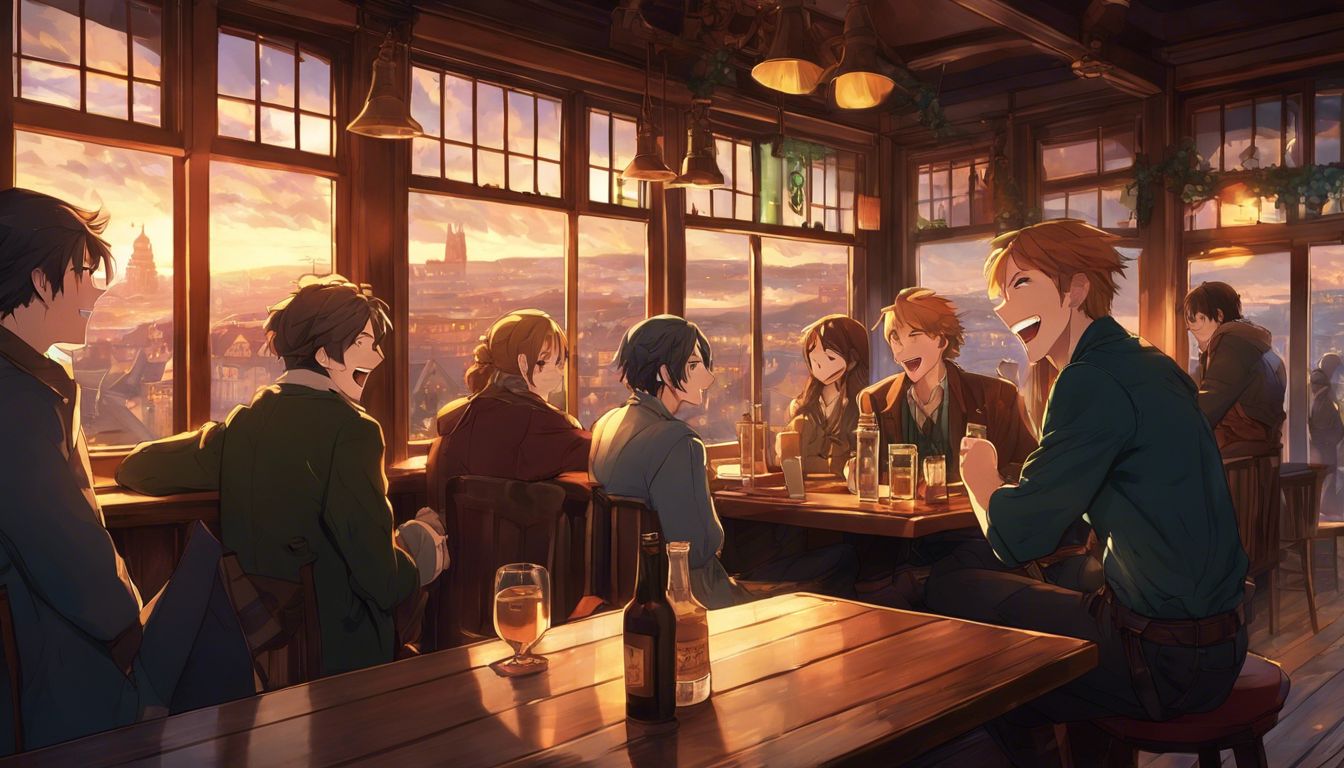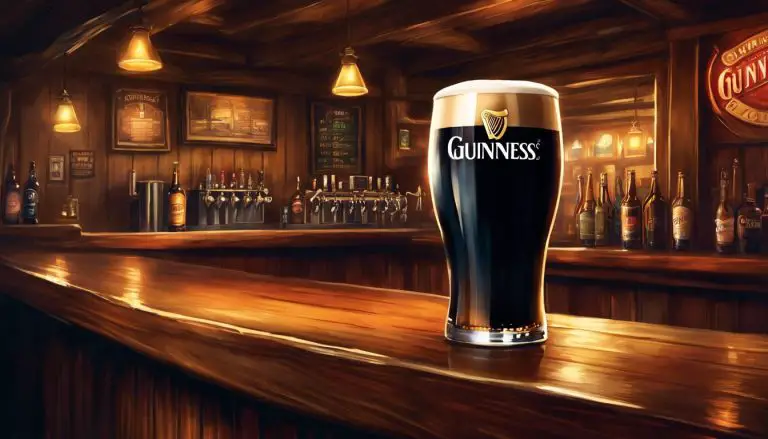Exploring the Power and Humor of Irish Curses: A Guide to Famous Insults and Hexes
Have you ever been left speechless by the biting humor of an Irish friend? Believe me, I’ve felt that sting—the chuckles from quick-witted pals hailing from Ireland can catch anyone off guard.
But don’t worry; after immersing myself in the lively world of Irish quips and comebacks, I’m ready to pass on a bit of that savvy to you. This post is your ticket to holding your own amid those crafty verbal exchanges, so you’ll never be at a loss for words again.
Ready for some good-natured ribbing? Let’s jump into it!
Key Takeaways
- Insults in Irish culture can show wit and build bonds between people. They have a long history, including in traditional settings where they might defend or call out wrongdoings.
- Some famous Irish insults are “Gobsh*te,” used for someone talking nonsense, and “Drysh*te,” to describe something useless. These insults mix humor with criticism.
- Playful Irish curses reflect the importance of language and storytelling in Ireland. They use creativity to add fun to conversations about negative traits like foolishness or laziness.
- Understanding these phrases can give travelers a deeper connection with Irish traditions. It shows how cultures use language differently across the world.
- Using such curses while visiting Ireland can help engage with locals and enjoy their unique sense of humor within conversation.
Understanding Irish Curses
In Irish culture, insults are often used to express strong emotions such as anger or frustration. The power of humor in Irish curses is also prevalent, with the use of witty and clever insults to lighten the mood even in heated moments.
The use of insults in Irish culture
Insults in Irish culture serve more than just to offend. They often show wit, express feelings, and even form bonds between people. For centuries, hurling a clever insult has been a part of everyday life in Ireland.
It’s common at the pub, during sports, and even among friends as a form of playful banter. These sharp words can lighten the mood or show that you’re quick on your feet.
History is full of stories where Irish people used insults to joke around or let off steam. In traditional settings, they might have also used curses for defense or to call out wrongdoings without starting a fight.
Curses were not always taken lightly though; some believed they had real power behind them. This belief made cursing both feared and respected as part of Irish folk traditions.
The power of humor in Irish curses
Irish curses hold a unique power, using humor to express strong emotions and create a sense of community. These curses are deeply ingrained in Irish culture and can be used for joking, lamenting, or simply relieving tension.
The art of cursing is not just about anger but also about laughter, with the Irish finding humor even in their most potent hexes. This blend of power and humor creates a distinct aspect of Irish language and tradition that visitors may find both fascinating and entertaining.
The use of humorous curses has been prevalent throughout Irish history as a way to connect people through shared experiences while expressing emotions. Whether you’re on the receiving end or hearing them from afar, understanding these witty insults can offer travelers an insightful glimpse into the rich tapestry of Ireland’s cultural heritage.
Famous Irish Insults and Curses
From “Gobsh*te” to “Wagon,” Irish insults and curses are as colorful as they come. These terms pack a punch while also delivering a hefty dose of humor, making them a unique part of Irish culture that’s worth exploring further.
Gobsh*te
Gobsh*te is one of the most notorious Irish insults, often used to describe someone who talks a lot of nonsense or acts foolishly. The word originated from the Irish term “gab” which means talk.
In Ireland, being called a gobsh*te is no laughing matter and is considered an offensive insult that carries significant weight in conversations. It’s important to be mindful of its impact when using it in any context.
As travelers explore the rich tapestry of Irish culture and language, understanding the power and humor behind words like Gobsh*te can provide insights into the colorful nature of Irish communication.
Drysh*te
Drysh*te is a quintessential Irish insult that’s often used to describe someone or something utterly useless or rubbish. In Ireland, it’s commonly employed in jest and carries a humorous tone despite being derogatory.
The term encapsulates the Irish flair for blending humor with disdain, making it an excellent example of the power of humor in Irish curses. Whether used as a lighthearted jest or a more serious condemnation, understanding the depth behind Drysh*te sheds light on how language and culture intertwine in Ireland.
This particular word connects deeply with the belief that individuals had extraordinary powers to curse others within Irish folklore. Furthermore, exploring Drysh*te provides insight into how swearing forms part of everyday communication and is often wielded playfully rather than maliciously in Ireland.
Geebag
Geebag, a popular Irish insult, is used to describe someone as obnoxious or annoying. Derived from the Gaelic word “giobog,” meaning a man’s scrotum, it is often employed to address an individual who is considered rude or impolite.
The term has strong connotations and is not commonly used in polite company. In Irish culture, the use of such insults can be both humorous and cutting at the same time, reflecting the unique blend of power and humor present in Irish curses.
Geebag is just one example of the colorful language that forms part of Ireland’s rich cultural heritage. Understanding these terms provides insight into the depth of Irish linguistic traditions and folklore.
Lick ar*e
“Lick ar*e” is a popular Irish insult used to call someone out for being overly flattering or sycophantic. It’s often directed at someone who is perceived as insincerely trying to gain favor from others.
This phrase has been part of the colorful language used in Ireland for centuries and reflects the direct and humorous nature of Irish communication.
Irish people use “lick ar*e” to humorously highlight insincere behavior, adding a lighthearted touch even when criticizing someone. Understanding these unique insults can be an interesting way for travelers to get a glimpse into Irish culture and its light-hearted yet straightforward approach to communication.
Wagon
One of the famous Irish insults, “Wagon,” is often used to describe someone as difficult or annoying. This term carries a sense of exasperation and can be employed in a humorous way to express frustration.
It’s important to understand that when an Irish person calls someone a “wagon,” they are likely not being literal but rather expressing their irritation playfully.
In conclusion, understanding the meaning behind various Irish curses such as “Wagon” provides insight into the language and culture of Ireland. These curses reflect the power of humor in everyday interactions and offer travelers an opportunity to engage with the unique linguistic traditions of this vibrant country.
My Favourite Irish Insults
– Some of my favorite Irish insults include “He has enough cheek for a second ar*e” and “She’d rob the milk from your tea and come back for the sugar.” These colorful expressions showcase the unique blend of humor and sharp wit in Irish curses.
“He has enough cheek for a second ar*e”
This Irish insult is used to describe someone who is exceptionally audacious or shameless. It implies that the person has an excessive amount of cheek, suggesting they are incredibly bold and impertinent.
This phrase showcases the unique sense of humor in Irish curses and reflects the importance of wit and cleverness in their use. It’s a lighthearted yet impactful way for travelers to understand the power and humor embedded within traditional Irish insults and hexes, offering insight into the cultural significance of such colorful language.
“She’d rob the milk from your tea and come back for the sugar”
One of my favorite Irish insults is, “She’d rob the milk from your tea and come back for the sugar.” It vividly captures someone’s tendency to take more than their fair share. This kind of colorful language is a common part of Irish culture, where humor and wit are valued in everyday interactions.
As travelers exploring Ireland, it’s important to understand that these phrases are often used lightheartedly and can be an enjoyable way to engage with the locals and immerse yourself in the rich traditions of Irish storytelling and humor.
The use of such imaginative insults reflects a long-standing tradition in Irish culture, where words are crafted with both power and humor. The vibrant use of language serves as a clue to the deep-seated importance placed on oral traditions in Ireland.
“Not the fizziest can in the fridge”
“Not the fizziest can in the fridge” might sound strange, but it’s a colorful Irish insult used to describe someone who lacks energy or is not particularly interesting. This humorous phrase reflects the lively and creative nature of Irish curses, which are often filled with wit and charm.
As a traveler, embracing these unique expressions can add an amusing touch to interactions with locals and provide insight into Irish culture and language traditions. So, if you ever hear this quirky phrase during your adventures in Ireland, remember that it’s all part of the rich tapestry of Irish humor and storytelling.
In Ireland, phrases like “Not the fizziest can in the fridge” encapsulate not only linguistic creativity but also offer a glimpse into how humor is woven into everyday communication.
Irish Curses for Different Occasions
Whether it’s foolishness, unattractiveness, or cheapness/laziness, the Irish have a curse for every occasion. From playful jibes to more serious insults, exploring the variety of curses in Irish culture reveals a rich tradition of humor and wit.
Foolishness
Irish curses for foolishness are colorful and creative, such as “May you do the full Irish” or “May your head be filled with more nonsense than a goose’s egg.” These curses highlight the importance of wisdom in Irish culture.
The use of humor in these curses reflects the Irish attitude of finding laughter even in moments of frustration. These phrases can add a touch of humor to conversations and provide travelers with an insight into the rich tradition of playful yet impactful language in Ireland.
The book “Power, The Book of Irish Curses” delves into this aspect, offering insights into how these phrases have been used historically and their significance within Irish folklore and traditions.
Unattractiveness
In Irish culture, there are colorful curses and insults that can humorously convey unattractiveness. These phrases carry a blend of wit and directness, often used in jest or light-hearted mockery.
The Irish language provides a range of creative ways to describe someone’s lack of appeal, adding an element of amusement to what could otherwise be seen as offensive commentary. These unique expressions offer travelers insight into the rich tradition of Irish humor and storytelling while navigating the complexities of cursing customs in Ireland.
The use of Irish curses extends beyond mere vulgarities; it serves as a way to add color and character to everyday conversation by infusing humor even into negative attributes like unattractiveness.
Cheapness/Laziness
Moving on from discussing unattractiveness, let’s dive into the realm of Irish curses related to cheapness and laziness. These curses are often lighthearted but carry a powerful message.
In Irish culture, phrases like “He’d squeeze a penny until it screamed,” or “She’s so lazy, she wouldn’t raise a sweat if she was locked in a sauna,” highlight the emphasis placed on clever humor even when criticizing undesirable traits.
The art of using creative insults with an undertone of humor as a way to express disapproval is woven deeply into Irish traditions, reflecting the light-hearted yet impactful style that characterizes these unique hexes.
Irish curse words for cheapness/laziness reflect the centuries-old tradition of combining wit and critique within language. In Ireland, colorful phrases have been used ingeniously to convey disdain in an amusing manner without losing their underlying potency.
Conclusion
In conclusion, Irish curses reflect the power of humor in conveying messages. They have been used for joking, flirting, lamenting and expressing rage. Understanding these curses provides insights into Irish culture and tradition.
The colorful insults and hexes contribute to relieving tension and creating a unique form of expression. Exploring the world of Irish curses enhances our appreciation for their practicality and impact on communication.
Embracing this aspect of Gaelic tradition can enrich our understanding of language diversity and human expression.






